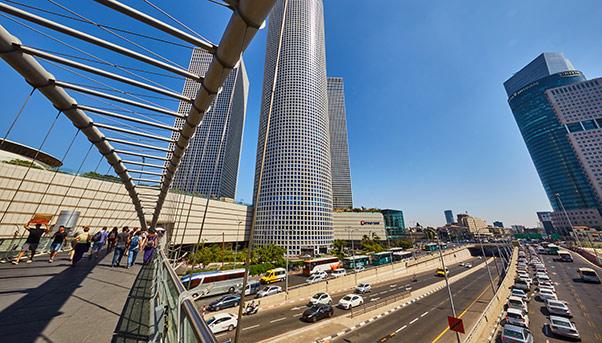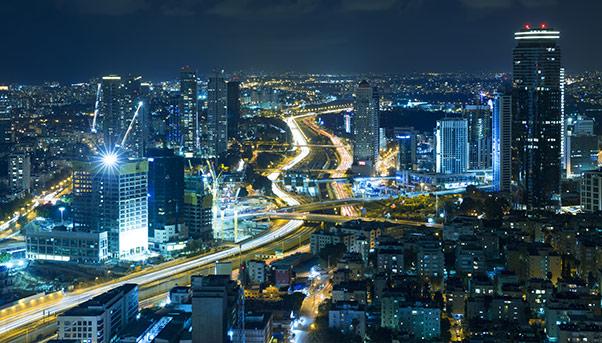
Israeli plans to invest 116 billion shekel ($32.4 billion) in its infrastructure for the next five years with the aim of raising its standards to those of other developed economies with the help of private – and maybe foreign – investors.
Prime Minister Benjamin Netanyahu announced the plan in early September 2017 with the support of Bank of Israel Governor Karnit Flug.
«We continue to invest and build infrastructures throughout the country», he said in a statement. «We will continue to bring the periphery closer to the center of the country for the benefit of all Israeli citizens. We will build more roads, interchanges and railroad tracks. The program will allow the government to provide better service to its citizens in transportation, energy, health and many other fields».
Flug was quick to welcome the government’s announcement, highlighting the work that had to be done.
«The level of infrastructure in Israel is insufficient, particularly in the area of public transportation, and mainly in the major cities, but also in the electricity delivery system and in communication infrastructure», she was quoted by the Reuters news agency as telling ministers at a weekly cabinet meeting.
«The volume of annual investment is low by international comparison, and we are therefore not closing the gap in the level of infrastructure compared to other advanced economies, which weighs down productivity and the growth potential of the economy», she added.
Israel’s Infrastructure Investment Plan
The plan foresees investments in 147 projects until 2021. Most of the projects – 63 – are in the energy and transportation sectors. A spokesman for the prime minister’s office told “We Build Value” 51% of the investments in transport would go to light rail projects in Tel Aviv, Jerusalem and Haifa. There would also be money spent on roads and bus lanes.
«Mapping the project is an important first step in the process of increasing foreign investments in infrastructure, expanding the scope of investments and developing Israel’s economy», Eli Groner, director general of the prime minister’s office, said in a statement. «The program was formulated in accordance with the insights that arose during meetings we held with international investment entities, which view the State of Israel as a preferred target for investment in infrastructures».
The plan comes a year after a study commissioned by the government recommended a series of investments to modernise the country’s infrastructure.

Closing the Gap
Zvi Eckstein, whose Aaron Institute for Economic Policy, an Israeli think tank, conducted a study on the country’s productivity, was quoted by the website of U.S. television network CNBC as saying the plan was much needed. «It’s a good time for the government to invest in transportation capital, in public transportation, roads, mainly trains, buses, bus routes, etcetera».
Eckstein estimates Israel would need to invest the equivalent of 4% of its gross domestic product (GDP) rather than the current 1.8% for the next 15 years for its infrastructure to reach a comparable level of quality as that of Europe or the United States.
As is the trend elsewhere, the government wants to get private investors involved in financing some of the projects via public-private partnerships, otherwise known as P3.
BlackRock, the world’s largest asset manager, was reported to have shown interest, having described Israel as an interesting market.
Bank of Israel’s Call to Act
The Bank of Israel has for years been urging the government to invest more in infrastructure. In tandem with the publication of its 2014 annual report, it released a statement highlighting the fact that public transportation services in urban areas were less extensive than those in most other developed countries.
«An improvement in infrastructure in this area will contribute to growth and to the standard of living, since it will improve the compatibility between workers and firms, and will support the population that is interested in joining the labor market but cannot purchase a private vehicle», it said.
In the statement, the Bank of Israel said the length of roads in relation to the country’s area as well as its population was lower than in most other countries. But the use of private vehicles had still grown by 4% between 2000 and 2014, faster than the use of public transit.
Investment in land transportation infrastructure like urban and intercity railways and roads as a share of GDP was less than 1% against 2.5% in Switzerland, which ranked the highest among developed countries, it said, citing independent figures.
So Israel’s rail network was relatively small, below the midpoint of developed countries in terms of the ratio between the use of railways and distance traveled on roads.
Despite all of the work to be done on its infrastructure, Israel’s economy is growing. In a report published in June, the Organisation for Economic Co-operation and Development (OECD) saw it up 3.2% this year after reaching 4% in 2016. Unemployment was expected at 4.3%, below the OECD average of 6.2%. Exports were also seen growing, up 5.6% in 2017.

